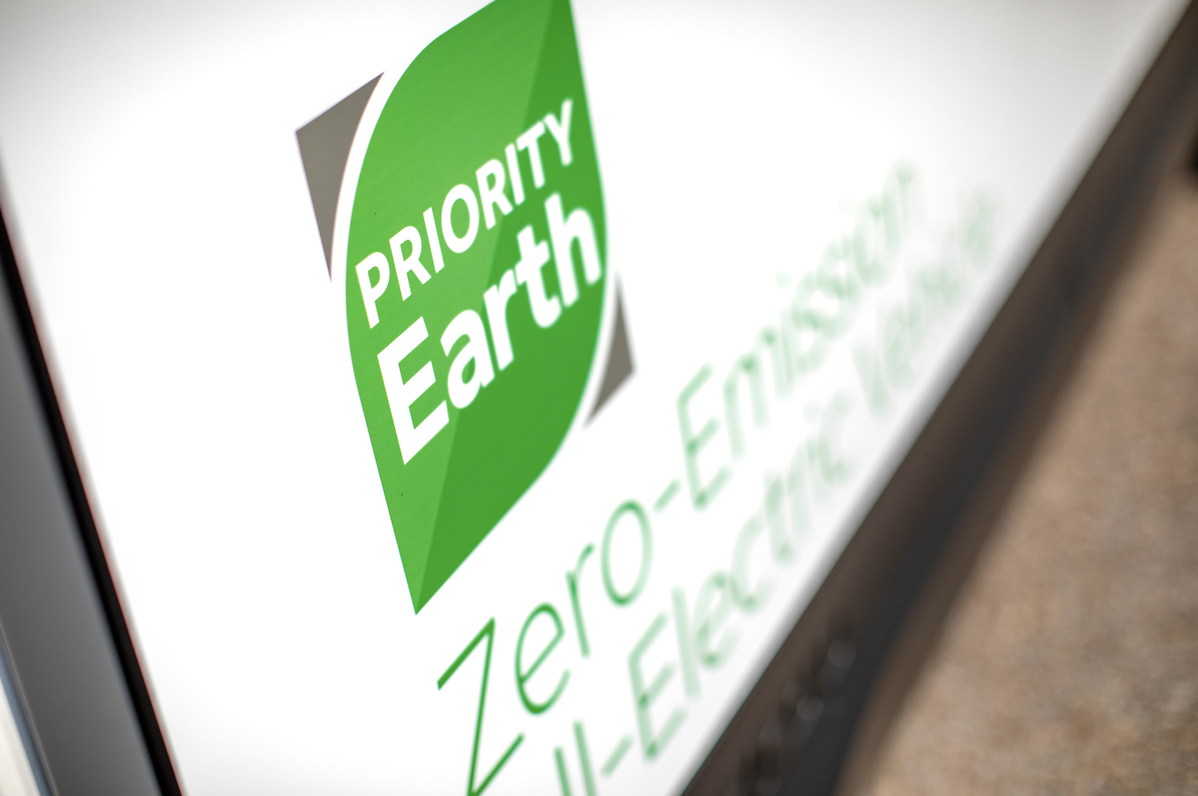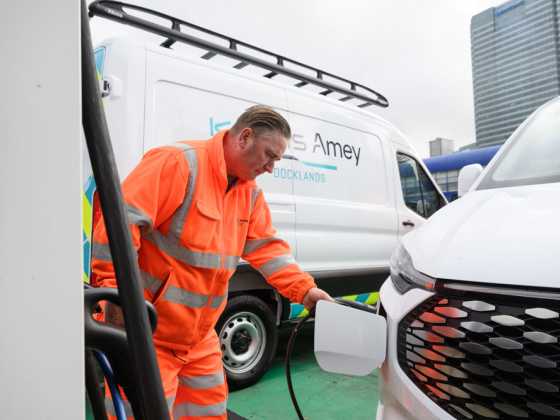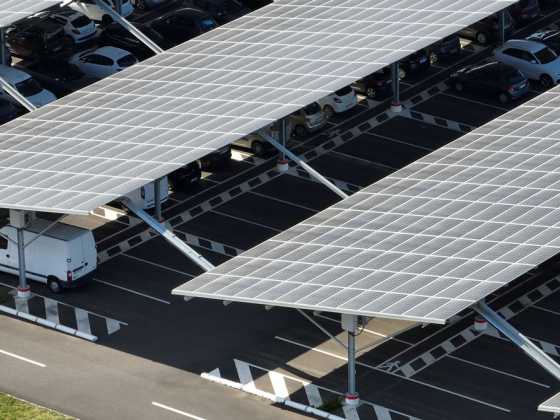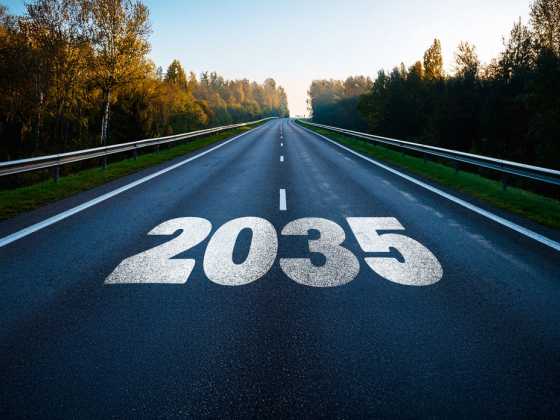Electrifying FedEx's parcel pick-up and delivery fleet

FedEx Express has a global target for 50 per cent of all newly-procured parcel pickup and delivery vehicles to be electric by 2025, rising to 100% of new vehicle orders by 2030. Vinay D’Souza, Senior Vice President for Planning and Engineering at FedEx Express Europe, shares how it's going
Could you tell us about FedEx Express Europe’s electrification roadmap? What targets have been set?
In March 2021, FedEx Corp announced a goal to achieve carbon-neutral operations, globally, by the year 2040. One of the areas benefitting from our initial $2bn investment is the electrification of our FedEx Express parcel pick-up and delivery (PUD) fleet. Our transition to a fully electric PUD fleet will follow a phased procurement approach – with a goal that 50% of all newly procured PUD vehicles to be electric by 2025, rising to 100% of new PUD vehicle orders by 2030.
Alongside electrification of parcel pick-up and delivery vehicles, we’re combining a variety of low or zero emissions solutions, such as e-cargo bikes, for the first and final mile. This means we remain focused on proactively driving down carbon emissions in the near-term, keeping carbon-neutral operations as our end goal, and ensuring that how we get there is not limited to the electrification of our PUD fleet.
How far are you into the electrification of your road fleet?
When it comes to our sustainability efforts, we’re already building on some solid foundations and approaches rooted in practicality. Whether these have been reducing fuel consumption, replacing vehicles and technologies to modernise our fleet, or adopting innovative solutions that are on the cusp of revolutionising our industry, we have long strived to decouple our business growth from our carbon emissions.
With over 210,000 motorized vehicles globally, we are undoubtedly at the beginning of a major transition period. Electrification technologies are now sufficiently mature enough for segments of the market to meet the moment. We introduced our first electric vehicle, powered by a lead-acid battery, in California in 1994, and in 2003 we were the first delivery company to use hybrid vehicles for pickup and delivery. But now we are preparing for electrification at scale, which brings a range of complexities and considerations beyond the vehicles themselves, like adequate infrastructure.
Could you tell us about the charging infrastructure you have installed, and what your future charging plans are?
We recently announced the procurement of 114 electric vehicle charging points across 6 European facilities, as we ready them to support the needs of our future fleet. Additional electric vehicle infrastructure will be rolled out in cities in the Nordics and Italy, and later additional cities in France and Germany as we work to ready over 100 facilities in Europe for electric PUD operations, following our near-term roadmap to 2025.
What have the challenges been in electrifying your fleet?
We have more than 4,000 alternative fuel vehicles already in operation in our global fleet, including more than 3,000 electric light commercial vehicles for first and final mile. The constant evaluation of new solutions and technologies and considered periods of testing lay the groundwork for solid foundations on which to scale. Adopting electrification, as a technology of choice, across the FedEx Express PUD fleet involves a thorough period of analysis - of energy consumption and capacity, forecasted future energy needs and supply of renewable energy sources, and then physically installing the infrastructure across facilities to support and fuel this fleet. On top of this, the roadmap of investments and implementations must remain agile and responsive to constantly evolving climate-agendas and the external landscape of environmental regulations.
Have these challenges been overcome or are there still barriers to overcome for the future, perhaps with electrifying HGVs?
When it comes to electrification as a way to achieve carbon-neutral ground operations, PUD is the portion of our fleet where we anticipate we’ll see the most comprehensive shift to a single technology. For linehaul trucks in particular, promising technologies are still being developed that may prove as equally viable as electrification. In November 2022, we began using a renewable diesel fuel on some of our European road network routes, with trucks leaving from our road hub in the Netherlands. Since the fuel is currently only available in the Netherlands, widespread adoption of this diesel is limited to select routes leaving Netherlands into France, Germany, Spain, Italy, Denmark, Sweden and Poland. We’re exploring similar alternative fuel solutions in additional countries, that may allow us to scale up our adoption of renewable diesels, which are made from organic matter and waste materials rather than fossil fuel sources.
What measures do you have in place to green last mile deliveries?
Many European cities are striving to increase liveability, reduce congestion, improve air quality, and promote active modes of mobility and transport, such as cycling. As well as adopting Responsible Consumption and Production (United Nations’ Sustainable Development Goal12) and supporting Climate Action (United Nations’ SDG13) both within and beyond our business, our first and final mile operations are critical to how we can support Sustainable Cities and Communities (United Nations’ SDG11). One area we are already very active is the addition of e-cargo bikes – alongside and occasionally working in collaboration with low or zero-emission vehicles. We’ve already added more than 70 e-cargo bikes to permanent operations in more than 17 locations across Europe. Our mix of three and four-wheel e-Cargo bikes in London, Edinburgh, Glasgow, Cambridge, and Norwich are already providing an efficient and popular solution for environmentally friendly urban delivery.
What advice would you give to other logistics operators looking to achieve net zero emissions?
Transportation is a challenging sector when it comes to decarbonisation – with linehaul trucking and aviation being particularly difficult to achieve significant, near-term emissions reductions. Therefore, to move towards carbon-neutral logistics, it’s important to firstly know exactly where your operational emissions are stemming from and then make decisions with strategic intent to move to reduce them. It’s important to do what you can in the near term by adopting already available solutions while also engaging in innovation and development of future technologies beyond your own business. By convening stakeholders across academia and science, the public and private sectors and through charitable collaborations with non-government organisations, organisations of any size can play a role in transitioning the wider logistics sector towards low or zero-emissions.






